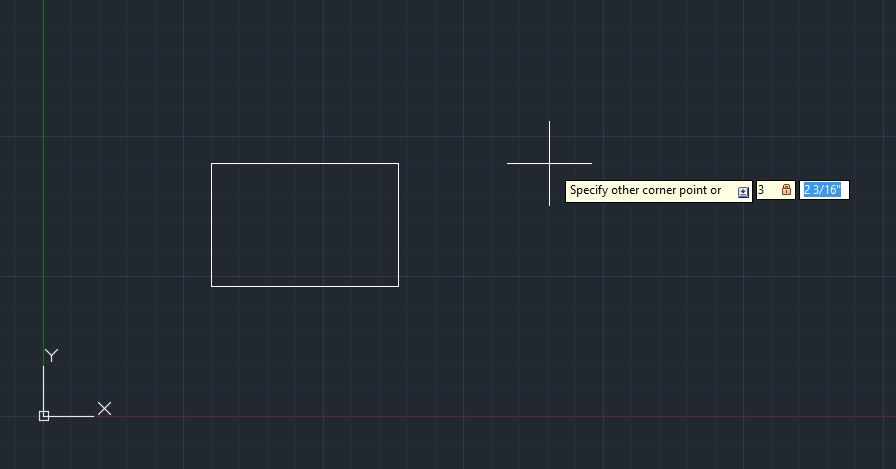Mastering the RECTANGLE Command in AutoCAD: A Comprehensive Guide

AutoCAD, a flagship computer-aided design (CAD) software developed by Autodesk, revolutionized the way architects, engineers, and designers create precise digital drawings. Among the myriad tools and commands within AutoCAD, the RECTANGLE command stands as a fundamental feature, indispensable for drafting a wide array of geometric shapes. In this comprehensive guide, we delve deep into the intricacies of the RECTANGLE command, exploring its functionality, versatility, and best practices for optimal utilization.
Understanding the RECTANGLE Command:
The RECTANGLE command in AutoCAD enables users to draw rectangular shapes with utmost precision and efficiency. Its syntax is straightforward:
RECTANGLE
Upon invoking the command, AutoCAD prompts the user to specify the first corner of the rectangle, followed by a series of options for defining the rectangle’s dimensions, including:
- Width: Input the width of the rectangle.
- Height: Specify the height of the rectangle.
- Rotation: Optionally, set the rotation angle of the rectangle.
Alternatively, users can create a rectangle by specifying two opposite corners. AutoCAD provides multiple methods for defining the rectangle’s dimensions, allowing users to input precise measurements or dynamically adjust parameters as per their requirements.
Key Features and Options:
The RECTANGLE command in AutoCAD offers various options and modifiers to enhance flexibility and streamline the drawing process:
- Specify Dimensions: Users can input precise dimensions for the rectangle, either in absolute values or relative to the current drawing units.
- Dynamic Input: With dynamic input enabled, users can directly input dimensions and angles in the command line, simplifying the creation process.
- Polar Tracking: AutoCAD’s polar tracking feature assists users in drawing rectangles aligned with specific angles, ensuring geometric accuracy.
- Ortho Mode: By enabling Ortho mode, users restrict drawing movements to horizontal and vertical directions, facilitating the creation of perfectly aligned rectangles.
- Object Snaps: Leveraging AutoCAD’s object snaps, users can snap to existing geometry points, such as endpoints, midpoints, or intersections, ensuring precise alignment and dimensioning.
- Grips Editing: After creating a rectangle, users can manipulate its dimensions and shape using grips, allowing for quick modifications without invoking additional commands.
Advanced Techniques:
Beyond basic rectangle creation, the RECTANGLE command in AutoCAD supports several advanced techniques to enhance productivity and precision:
- Dynamic Dimensions: Utilizing AutoCAD’s parametric drawing capabilities, users can create dynamic rectangles with adjustable dimensions controlled by geometric constraints.
- Array Functionality: AutoCAD’s array functionality allows users to create arrays of rectangular shapes, either in a linear or polar pattern, with customizable spacing and orientation.
- Reference Points: By leveraging reference points or auxiliary construction lines, users can create rectangles aligned with specific features or dimensions within the drawing.
- Customization: AutoCAD’s extensive customization options enable users to define custom rectangle styles, including line types, colors, and hatch patterns, ensuring consistency across drawings.
Best Practices:
To maximize efficiency and accuracy when using the RECTANGLE command in AutoCAD, it’s essential to adhere to the following best practices:
- Plan and Sketch: Before drawing, carefully plan the dimensions and orientation of the rectangle, sketching rough outlines if necessary to visualize the final design.
- Use Object Snaps: Always utilize object snaps to ensure precise alignment and dimensioning, minimizing errors in the drawing.
- Leverage Dynamic Input: Take advantage of dynamic input to input dimensions and angles directly, speeding up the drawing process and reducing reliance on additional commands.
- Practice Grips Editing: Familiarize yourself with grips editing to efficiently modify rectangle dimensions and shapes without invoking separate commands.
- Stay Organized: Maintain a structured layering system and naming conventions for rectangles and other drawn elements, enhancing clarity and ease of editing.
Conclusion:
In conclusion, the RECTANGLE command in AutoCAD stands as a foundational tool for creating precise rectangular shapes in digital drawings. Its versatile functionality, coupled with advanced features and customization options, empowers users to efficiently draft geometrically accurate designs across various disciplines. By mastering the RECTANGLE command and adhering to best practices, designers can elevate their proficiency in AutoCAD and produce high-quality drawings with unparalleled precision and efficiency.







